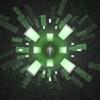High quality random starfields are scientifically plausible, as are randomly drifting close stars. Anything more accurate and more expensive needs to be justified by a concrete gameplay need; the simulation anxiety that makes you afraid to pretend and approximate isn't important enough to justify effort and (as already noted by others) it exceeds the practical mathematical/computational limits of what is feasible.
If you really desire to go all-in on accurate gravity simulation, you might drop the action or adventure elements and adopt the niche but established genre of interplanetary ballistic simulators: shoot a projectile with such a direction and velocity that it hits another planet.
To keep chaotic dynamics under control all examples I've seen are 2D, turn based (i.e. a succession of individual shots), with fixed planets (to allow trial and error) and with passive projectiles of negligible mass that are the only thing that moves.






